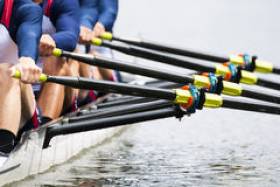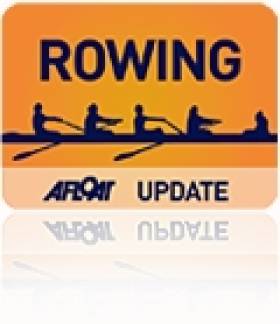Displaying items by tag: Dublin
Legislating for Houseboats on Canals Near Dublin Will Be a Hot Topic
There are nearly 17,000 boats on the inland waterways, of which 9,000 are registered on the Shannon, 7,000 on the Erne, and 600 boats on the canals.
New bye-laws to control usage of the waterways are being prepared, which will have to deal with houseboats, and that is likely to be a hot topic.
Waterways Ireland, the North/South body, set up under the Good Friday Agreement, manages the waterways in Northern Ireland and the Republic and has drawn up draft Bye-Laws to replace the three sets of existing regulations controlling their use, some of which are 40 years old.
"About 150 of the boats on the canals are now being used either for full-time living or during the week by students at College"
Paddy Harkin, Inspector of Navigation at Waterways Ireland, has told me that the new Bye-Laws will have to deal with the ‘hot topic’ of houseboats on the canals, in which there has been a considerable increase close to Dublin. Pressure on housing is evident in that about 150 of the boats on the canals are now being used either for full-time living or during the week by students at College.
A public consultation, which closes on October 2, has raised several issues about the use of the waterways, including houseboats and safety and mooring in the harbours.
Listen to Paddy Harkin about the legislation plans in this clip below
You can hear the full interview on the Maritime Ireland Podcast. Details about the consultation are on: waterwaysireland.org
New Study Considers Recreation Value of Grand Canal in Dublin’s South Central Area
Waterways Ireland and Dublin City Council have launched a new study that considers the outdoor recreation opportunities of the Grand Canal and its towpaths and land resources in Dublin’s south central area.
The jointly commissioned report by Irish Leisure Consultants, titled The Grand Canal Recreation Activation and Animation: Portobello to Kylemore Road, is informed by the views and knowledge of local communities and stakeholders as well as the ambitions of national and local strategies and plans.
The area in question has limited on-water activity at present, even though it has one of the longest stretches of the canal in the city with no navigation locks.
The Grand Canal and its towpaths represent a significant opportunity to unlock the potential of this inland waterway asset for local communities, Dubliners and visitors to the city.
The consultation process identified positive, strong and diverse connections among residents and communities with this section of the Grand Canal, including recreational uses, environmental stewardship, heritage, and active travel. The report emphasises the importance of balancing of opportunities and responsibilities to increase quality of life and provide for a diverse range of needs and interests.
The report also recommends a collaborative approach, with an initial programme of community-based activities and leadership training to enhance a sense of place and develop perceptions and engagement with the canal, followed by the physical development of a series of links, nodes and zones along the canal.
In spring and summer this year, the project partners say they will work with local stakeholders to pilot a number of on-water activities and explore sustainable initiatives to unlock the potential of the city’s Grand Canal.
Global Distribution Giant Maersk Inks Deal with Iput for 252,000sq ft of Dublin Logistics Space
IPUT Real Estate, an Irish property group has secured a significant coup with global logistics operator Maersk by signing for a total of 252,000sq ft of space at its latest logistics scheme in Dublin.
News of Maersk’s decision to locate its operations in unit 3 (178,000sq ft) and unit 4 (74,000sq ft) at Quantum Logistics Park near Dublin Airport follows international retailer Harvey Norman pre-let agreement last December for unit 2 (91,524sq ft) and DHL’s pre-letting of unit 1 (206,000sq ft) earlier this summer.
The completion of the three deals brings all 549,524sq ft at the north Dublin scheme to full occupancy in advance of its ultimate completion in the second quarter of 2023.
Located at Kilshane Cross and within a short drive of Dublin Airport, the Dublin Port Tunnel, Dublin city centre, and the M50 and wider motorway network, Quantum Logistics Park is being developed to the highest sustainability standards in the market with LEED Gold and BREEAM Excellent ratings.
The Irish Times has more on this commercial property development.
North station was the popular choice with the coin toss winners for the Dublin Colours Boat Race rowing event. Trinity won the men’s and chose it, with UCD winning the women’s.
Sean Drea was the man in charge for the coin toss at the Dublin Civic Offices at Wood Quay. The races are scheduled for Saturday week, March 14th.
Dublin to Host First of Corporate Regatta Series
#Rowing: Dublin City Council and Waterways Ireland have backed a new Corporate Regatta in Dublin, the first of a planned series.
The Rowing Ireland event will be held on May 10th in the Docklands. Crews from companies will compete, with the aim of encouraging team spirit. A learn-to-row session, lunch and a drinks and awards presentation are part of the deal.
The next stage of the series is set to be held in Cork in October.
Appeal For Sightings Of Invasive Coypu On Royal Canal In Dublin
Waterways Ireland advises all users of sightings on the Royal Canal at Ashtown of a large invasive rodent species that is highly damaging to river, lake and canal banks.
As previously reported on Afloat.ie, the coypu — also known as the nutria in the United States — is regarded as a destructive invasive species and pest, posing a threat to agriculture, the stability of river banks and even coastal defences.
The coypu is an EU-regulated species of concern with trade, transport and reproduction restrictions in place (No.1143/2014).
The large river rats can also carry a number of serious diseases communicable to humans and domestic animals.
Waterways Ireland says coypu eradication programmes can cost up to several millions of euro and are not always successful.
Most recently there were sightings of the rodents in Cork city two years ago, after a number were trapped by the National Parks and Wildlife Service (NPWS) in a tributary of the River Lee.
But their presence across the country in the capital raises concerns about their further spread throughout Ireland’s inland waterways.
Waterways Ireland has provided a checklist for how to spot a coypu, which are often confused with common otters:
- Large semi-aquatic rodent up to 1 meter in head to tail length. Features same in juveniles.
- It can weigh 5-9kg.
- It has webbed hind feet.
- Dark fur often with lighter ends and has a white muzzle.
- Has long cylindrical tail (not fur tail like otter) and small slightly protruding ears.
- Distinctive features are large bright orange-yellow incisor (front) teeth usually visible.
- Coypu are generally found near permanent water.
Do not attempt to engage, trap or harm these animals.
Waterways Ireland appeals for the public keep a lookout along the waterways and especially along the Royal Canal at Ashtown, and report sightings (with photos is possible) to any of the following:
- Waterways Ireland Environment Section 061-922141
- NPWS at [email protected] or your local NPWS ranger with details of location/date and a photo if available
- [email protected]
- records.biodiversityireland.ie
For more information visit species.biodiversityireland.ie.
Dublin Backed Out of Tall Ships Races Bid Over Costs
#TallShips - Dublin backed out of its bid to host the 2019 Tall Ships Races after Dublin City Council deemed the €3 million costs too high.
As the Irish Independent reports, the council said in defending the decision that the cost "represents a very significant funding implication for DCC", describing it as bigger than its annual budget for festivals and events throughout the year – including the now annual Riverfest.
Business leaders described the move as "disappointing" in light of the expected €30 to €75 million boost to the local economy from an event that attracted over a million visitors when it was last staged in the capital in 2012.
As previously reported, Galway is already stepping into the breach by mounting its own bid to host the tall ships in the same harbour that welcomed the Volvo Ocean Race in 2012 and 2009.
The Irish Independent has more on the story HERE.
Body Recovered From River Liffey In Dublin City Centre
#Liffey - An emergency operation in Dublin city centre this afternoon (Monday 5 October) saw a body recovered from the River Liffey, as TheJournal.ie reports.
The body of a man was taken from the water around 2pm less than four hours after he was spotted from a bridge near the IFSC.
Emergency response teams from the Dublin Fire Brigade, the Irish Coast Guard, Dun Laoghaire RNLI and more raced to the scene for the multi-agency operation. The Journal.ie has more HERE.
Currachs to Race in the Heart of the Capital Tomorrow
#COASTAL ROWING: The third annual Dublin Currach Regatta will take place on Saturday, the 4th of July, between the iconic bridges and in the heart of the city on the river Liffey.
Sponsored by Dublin Port Company and Dublin City Council, this is the third year that the east coast has the privilege of hosting a currach regatta included in the national currach racing league. This year the annual Dublin currach regatta will take place for the first time ever on the river Liffey in the heart of Dublin city centre.
Following many years of forging contacts between east coast currach rowers and teams on the west coast of Ireland, this is the first year that the western teams will come to Dublin to compete in a championship fixture.
Currach racing teams from Donegal, Kerry, West Clare, The Aran Islands, Connemara and Galway will attend. Both women’s and men’s crews will be competing as well as the traditional mixed crew race, Fear agus Ban. The races will feature qualifying heats following on to senior men’s and women’s finals as well as mixed crew racing.
All races will take place between 11:00 a.m. and 16:30 and the heats and competition can be viewed all along the Liffey quays right up to the Jeanie Johnston for the duration of the regatta.
Clean Sweep for Trinity over UCD on Liffey
#ROWING: Trinity won all four Colours races on the Liffey today. In the Gannon Cup for senior men, the men in black and white hoops took a small early advantage, stretched it to three-quarters of a length by Capel Street Bridge and won by one-and-a-half lengths. The two novice races were surprisingly one-sided for the Dublin University crews. The best race of the day was the women’s senior contest, for the Corcoran Cup. UCD took an early advantage and led for most of the race. But Trinity were impressively controlled in their rowing and took the lead through the last two bridges. They stretched their advantage to half a length at the finish.
Colours Races 2015, Liffey, Dublin, Saturday, March 14th.
Senior Men (Gannon Cup): Trinity (A Browne, W Doyle, J Magan, M Corcoran, P Moreau, M Kelly, L Hawkes, D Butler; cox: C Flynn) bt UCD 1½ l
Novice (Dan Quinn Shield): Trinity bt UCD, easily
Senior Women (Corcoran Cup): Trinity (G Crowe, H O’Neill, H McCarthy, S Healy, S O’Brien, A Leahy, L McHugh, R Morris; cox: N Williams) bt UCD ½ l
Novice (Sally Moorhead trophy): Trinity bt UCD easily


































































